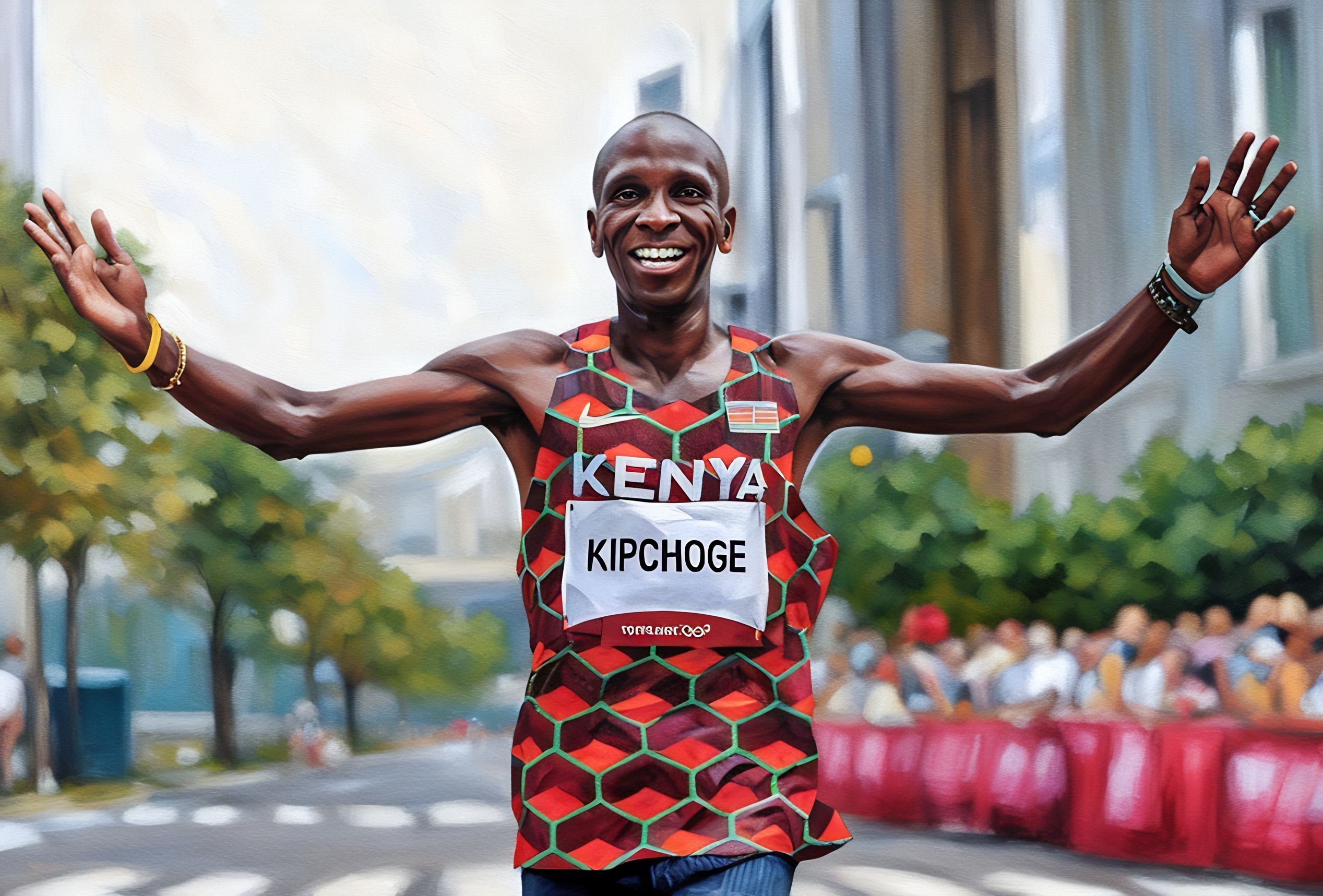The 800m and 1500m Challenge
The 800m and 1500m races are the heart of middle-distance running, where the challenge lies in mastering the delicate balance between aerobic and anaerobic endurance. These races are as much mental as they are physical, requiring athletes to push their limits while maintaining strategic pacing. The ability to excel in both aerobic and anaerobic systems is key to competing at the highest level. Building endurance for these events is a journey that demands thoughtful training, mental resilience, and a strong focus on the fine-tuned balance between speed and stamina.
In this article, we will explore how to build both aerobic and anaerobic endurance for the 800m and 1500m races. With a solid understanding of how these energy systems work, we’ll dive into the best training methods and strategies to optimize your performance. Whether you’re preparing for your first race or looking to shave seconds off your personal best, mastering both aerobic and anaerobic endurance will give you the edge to dominate on race day.
Understanding Aerobic and Anaerobic Systems
Before diving into the specifics of training, it’s important to understand the difference between aerobic and anaerobic endurance and why they’re both crucial for middle-distance runners.
Aerobic endurance refers to the body’s ability to sustain prolonged effort while utilizing oxygen to produce energy. This system is responsible for fueling longer, steadier efforts, where the intensity is manageable and the body can keep up a consistent pace. In the 1500m race, for example, aerobic endurance plays a crucial role because the runner must maintain a high intensity without depleting their energy reserves too quickly.
On the other hand, anaerobic endurance comes into play when the body has to perform at higher intensities where oxygen isn’t delivered to the muscles fast enough. This system is used in shorter bursts of activity, like sprints or powerful surges, and is particularly important for the 800m race. The 800m race demands runners to operate in an anaerobic state, especially in the final stretch, where lactate builds up in the muscles, leading to fatigue.
The balance between these two systems determines a runner’s ability to perform consistently throughout the race and to finish strong in the final meters. To improve in both the 800m and 1500m races, training needs to target both energy systems, ensuring you can sustain pace while being able to accelerate when the race demands it.
Aerobic Endurance: The Foundation of Your Race Strategy
Building aerobic endurance is essential for both the 800m and 1500m, but especially for the latter. The 1500m race is often referred to as a “sprint with endurance,” and maintaining an efficient aerobic system will allow runners to pace themselves correctly, avoid early fatigue, and still have energy for a finishing kick. Improving aerobic capacity ensures that your muscles receive the necessary oxygen throughout the race, allowing for better performance over a longer period.
To build aerobic endurance, one of the most effective training methods is long, steady-state runs. These runs should be done at a pace that is slower than race pace but still challenging enough to improve cardiovascular efficiency. For example, a typical long run could last 45 minutes to an hour, performed at a pace where conversation is possible but still requires effort. As you build endurance, you can increase the distance or the duration, helping your body adapt to longer periods of exertion.
Tempo runs are another essential component for improving aerobic endurance. These runs are done at a pace slightly faster than your comfortable pace, just below your lactate threshold. The purpose of tempo runs is to help the body learn to clear lactic acid more efficiently and sustain faster paces for longer periods. A typical tempo run might involve running 20 to 30 minutes at a pace that feels challenging but sustainable, followed by a cool-down.
In addition to long runs and tempo runs, fartlek training can also help build aerobic endurance while incorporating elements of speed. Fartlek, or “speed play,” involves alternating between periods of faster and slower running. The unpredictable nature of fartlek training helps simulate the varied pace demands of a race, allowing runners to become more comfortable with changing speeds.
Anaerobic Endurance: The Key to Finishing Strong
While aerobic endurance is essential for sustaining energy throughout the race, anaerobic endurance plays a pivotal role in the latter stages of the race. Both the 800m and 1500m races demand surges of speed and power, and improving anaerobic capacity will allow runners to handle these moments of intensity without succumbing to fatigue.
The anaerobic system is primarily responsible for fueling high-intensity efforts, like sprinting, where the body relies on energy sources that do not require oxygen. During the 800m, this system dominates in the final 200 meters, where runners must push themselves to their maximum. Similarly, in the 1500m race, anaerobic endurance becomes crucial in the last lap or the final 400 meters, as runners often have to make a decisive move.
Interval training is one of the best ways to build anaerobic endurance. High-intensity intervals force the body to work hard and operate without sufficient oxygen, thereby improving the anaerobic system’s ability to recover quickly between efforts. For example, running 400-meter repeats at a pace faster than your race pace, followed by a short rest or light jog, will help build the power and speed needed for the anaerobic portions of the race.
Another useful anaerobic training method is hill sprints. Running uphill forces the body to exert more power with each stride, helping to build strength and anaerobic endurance. Sprinting uphill for 20 to 30 seconds at maximum effort, followed by a walk or light jog back down, is a great way to train the body to handle high-intensity efforts. The steep incline forces the muscles to work harder, enhancing both speed and strength.
Plyometric exercises, such as box jumps, bounding, and quick sprints, also play an essential role in anaerobic conditioning. These exercises help improve explosive power, increasing a runner’s ability to surge when needed, especially during the final sprint of a race. Plyometrics are particularly useful for middle-distance runners because they enhance the ability to generate force quickly, a skill that is critical during surges and kick phases of the race.
The Importance of Recovery: Balancing Intensity and Rest
As critical as training is for building endurance, recovery is equally important in improving both aerobic and anaerobic capacity. Overtraining without proper rest leads to burnout, injury, and diminished performance. Building both aerobic and anaerobic endurance requires careful balancing of hard training with adequate recovery.
Active recovery days are important for allowing the body to recover while still staying active. These days might involve light jogging, swimming, or cycling at a relaxed pace. These activities promote blood flow to the muscles, helping them repair and recover without taxing the body further.
Sleep is another crucial aspect of recovery. The body repairs and strengthens itself during sleep, so ensuring adequate rest each night is essential for performance. Without enough sleep, the body cannot adapt properly to the stress of training, and stamina and strength will suffer as a result.
Recovery should also include nutrition. After high-intensity training sessions, it’s important to refuel the body with a combination of carbohydrates and protein to restore glycogen stores and aid in muscle recovery. Hydration is also key—dehydration can negatively affect performance and recovery, so be sure to drink enough water before, during, and after workouts.
Tapering: Peaking for Race Day
As race day approaches, it’s important to taper your training. Tapering involves reducing the intensity and volume of training in the final weeks before a race to allow the body to recover fully and perform at its best. During this time, the focus should be on maintaining sharpness and speed, rather than building endurance. Short, high-intensity intervals can be used to keep the body accustomed to race pace, while the overall volume of training should be reduced to allow for peak performance on race day.
Tapering also includes paying attention to mental preparation. This is the time to focus on race strategy, visualize a successful race, and mentally rehearse how to handle different race scenarios. Staying confident and focused is as important as physical readiness when it comes to performing well in the 800m and 1500m races.
The Mental Edge: Developing Race-Day Resilience
Building endurance for middle-distance races is not just about physical training—it’s also about developing mental toughness. Both the 800m and 1500m races require athletes to endure discomfort and push through the inevitable fatigue that sets in. Mental resilience helps you stay focused on your strategy, even when your body is screaming for rest.
Visualization is a powerful tool for mental preparation. Before each race, visualize yourself executing the perfect strategy, running with smooth form, and surging ahead in the final stages. By mentally rehearsing the race, you’ll be better equipped to handle race-day nerves and physical strain.
Breathing exercises and mindfulness can also help manage stress and maintain focus during a race. Learning to stay calm and controlled, even when the race heats up, will allow you to execute your pacing strategy effectively and finish strong.
Crossing the Finish Line: The Reward of Preparation
Building both aerobic and anaerobic endurance for the 800m and 1500m races is no easy task, but the payoff is well worth the effort. These races challenge athletes to blend speed, strength, and stamina, and training both energy systems allows you to perform at your best when it matters most.
By incorporating aerobic workouts like long runs, tempo runs, and fartlek sessions with anaerobic training such as interval training, hill sprints, and plyometrics, you can develop the endurance and speed required for middle-distance success. Remember, recovery, nutrition, and mental preparation are just as crucial in ensuring that you reach your peak performance on race day.
With the right balance of training and recovery, you’ll find yourself crossing the finish line with confidence, knowing that every step you took in your preparation brought you closer to victory. Keep pushing, stay focused, and trust in the process—you’ve got what it takes to excel in the 800m and 1500m.




